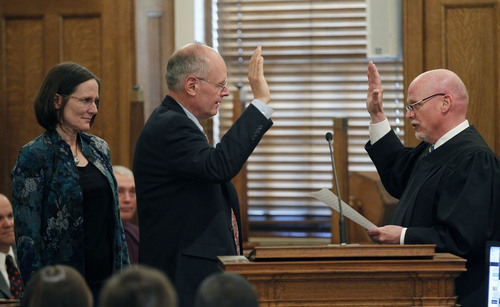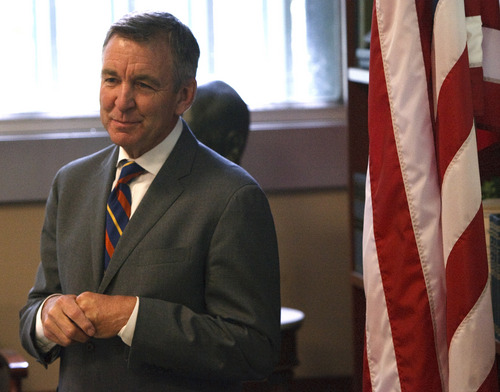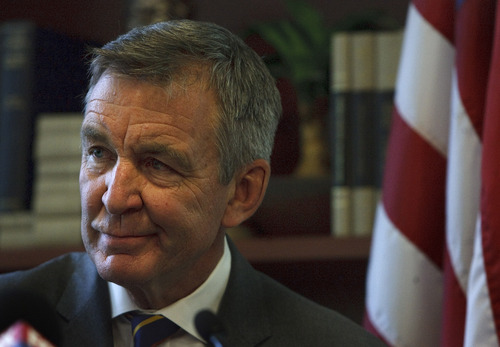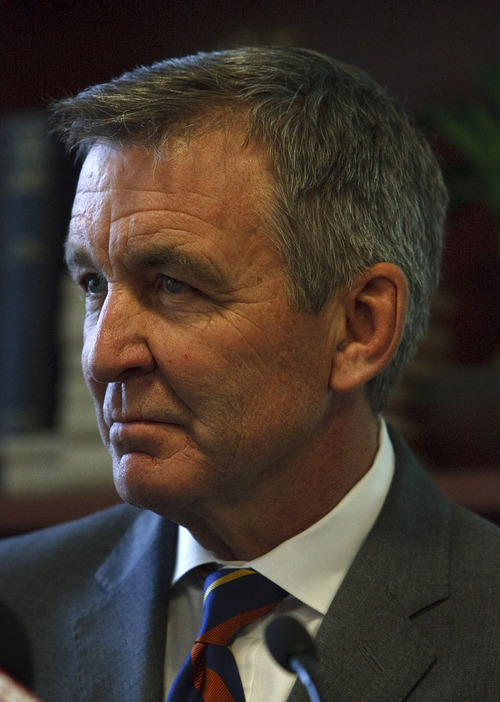This is an archived article that was published on sltrib.com in 2014, and information in the article may be outdated. It is provided only for personal research purposes and may not be reprinted.
Utah's federal court will have two openings for jurists with the announcement that two veteran judges are moving to senior status.
U.S. District Judge Dee Benson, 65, took senior status effective on Jan. 1. Chief Justice Ted Stewart, 65, will assume that status in September.
Judges with senior status, which is based on length of service and age, are required to manage one-quarter of the caseload of active judges.
But Benson will continue to carry a full caseload for now.
"Senior judges make a real difference in a number of districts, especially ones with big dockets like Arizona, Nevada and the Eastern District of California, because there has been no comprehensive [reform of judicial appointment]," said Carl Tobias, a law professor at the University of Richmond. "In those districts, many judges, like Benson, keep carrying heavy loads."
With their semi-retirements, Utah will have six judges with senior status and just three full-time judges. Other senior judges in Utah's U.S. District Court are Tena Campbell; Dale A. Kimball; Bruce S. Jenkins; and David Sam.
Benson, a graduate of the J. Reuben Clark Law School at Brigham Young University, was appointed to the bench more than 22 years ago by former President George H. W. Bush. He served as chief judge from 1999 to 2006.
Stewart graduated from the S. J. Quinney College of Law at the University of Utah. He was nominated by former President Bill Clinton and, after a contentious partisan fight, assumed the bench in 1999.
There are currently 96 vacancies in the federal circuit and district court system; another 21 future vacancies, including Stewart's, have already been announced for this year.
Tobias said that given the slow pace of judicial confirmations and a looming election year, it is unlikely Utah's vacancies will be filled this year unless Utah senators move "very quickly" with recommendations.
Glenn Sugameli, founder of Judging the Environment and a senior staff attorney with Defenders of Wildlife who monitors judicial nominations, said the vacancy rate would be drastically reduced if Senate Republicans would vote on 29 pending judicial nominees.
"All 29 have been approved in the Judiciary Committee, most with the approval of all members, including both Utah senators," Sugameli said. "The continuing unprecedented judicial vacancy crisis is denying people and companies the access to judges they need to resolve a wide range of legal disputes."
Utah Sens. Orrin Hatch and Mike Lee, both Republicans, get to recommend individuals to fill the open seats. President Barack Obama will then nominate the candidates, who must be approved by the Senate Judiciary Committee and confirmed by the U.S. Senate.
Neither Hatch nor Lee were immediately available for comment.
It took more than a year for Robert J. Shelby, the newest member of Utah's federal court, to get through the process. Shelby was nominated in December 2011 and confirmed by the Senate on September 2012.
In the last fiscal year, which ended Sept. 20, there were 1,372 civil and 663 criminal cases pending in Utah's federal court. The weighted filings calculation — which takes into account more complex cases — shows there were 499 cases per judge, according to the Administrative Office of the U.S. Courts.
That caseload is about average in the federal system. Among the eight states in the 10th Circuit Court of Appeals, Utah's court ranks third in cases per judge; Colorado, at 663 weighted filings per judge, is first, while New Mexico, at 580 cases, is second.
Like Benson, most of the other senior judges in Utah are still carrying substantial caseloads.
Twitter: Brooke4Trib









